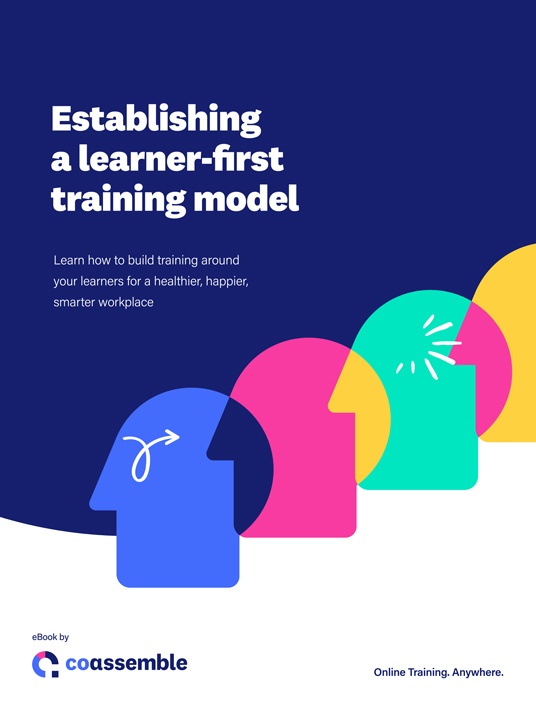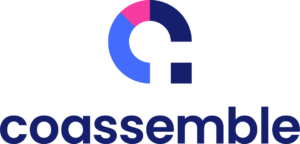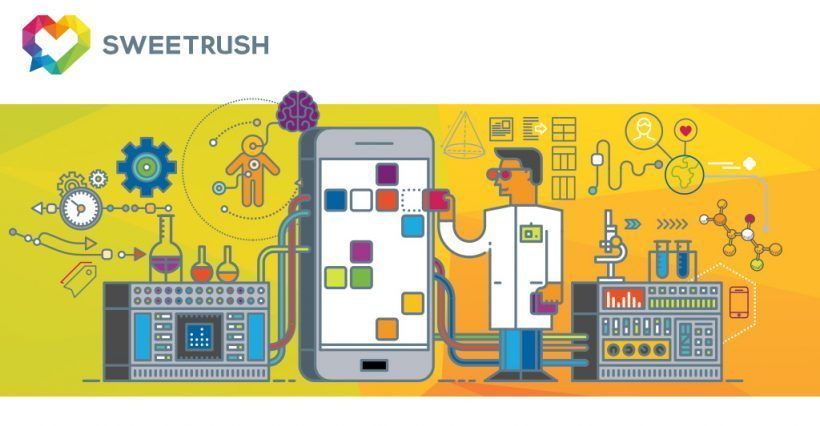Choosing The Right Tools For Your Learners Based On The Learner-First Training Model
What Is The Learner-First Training Model?
The learner-first training model is simple but radically different from the way a lot of organisations train.
In a learner-first training approach, trainers always start with the learner. The learner is the basis for every aspect of a company's training strategy, from the company's learning goals to their learner pathways to the tools that they choose to train and the way they design their training.

Whilst this may seem like common sense, it's actually not what a lot of trainers do.
Viewing Tools From A Learner-First Perspective
Most trainers take a tool-first approach to training. The tool-first trainer assesses the tools at their disposal and then tries to fit their learners into these predefined platforms and processes. This often results in trainers trying to fit square pegs (their learners) into round holes (their tools).
In the learner-first approach, tool evaluation only comes when the trainer fully understands who they’re training and why.
We’ve written articles on how to create learner personas [1], define learning goals [2], and structure learner pathways [3]. These are key steps in the learner-first training model, and help answer the following questions:
- Who are my learners?
- Why are they learning?
- What knowledge do I need to share with them?
- How do they learn?
Answering the above questions means that we have explosive knowledge when it comes to choosing our tools. Take the below scenarios as an illustration.
Are we trying to roll out sales training to a millennial, time-poor workforce that have historically shown low engagement with long-form eLearning? Let’s prioritize a toolset that allows for the creation of bite-size learning content, works on our learners’ smartphones, and makes use of social learning.
Are we running technical product training for a geographically disparate customer success team who are low in technical literacy? Let’s focus on finding a tool that has robust virtual classroom features including screen sharing and question forums, and solid post-assessment options.
Do we want to communicate a small change in our policies and procedures? Email may be a better tool than your LMS here; remember, you often have more tools at your disposal than you think.
Evaluating Current Learning Tools
The first step in assessing what tools you’ll need to train your learners best is looking at what you already have, keeping your learner in mind.
Whilst Learning Management Systems tie many tools together and are often the place where the majority of learning takes place, they are not the only tool at your disposal. Learning tools can be anything that assists your learners in their journey to knowledge. Your company email server may play a key role in notifying your team that new training is ready for them to complete; you may use survey software to seek feedback on trainings; key learning documents may be stored on Google Drive or Microsoft Office. How about webinar tools, video hosting platforms? Learning tools are no longer just traditional platforms like your LMS and authoring tools. Almost all emerging technology can be used for learning in some capacity.
So how do you find your current learning tools? Using your learner pathways, list each tool that your learners currently encounter on their journey to knowledge. Your LMS and authoring tools will probably be first on the list, but also include any software or platform they interact with, even if it’s a simple button click. Then, look at the rest of the company tools that you have access to; any software or platforms that you use. Think social media accounts, survey tools, chatbots, messaging software, email servers, email automation software, task management platforms, and anything that could be used for design (flowcharts, presentations, mood boards, storyboards).
Once you have a list of your tools, start brainstorming all the ways that they could be used either to help your training process. Your company uses Mailchimp; why not use it to send out a monthly newsletter to inform your team of trainings that are currently available? You may find that your existing tools can augment your Learning Management System and fill in for features that it’s lacking.
Take the time to familiarise yourself with your tools - they may contain features that you don’t currently know about. You may use Skype to conduct team trainings. Did you know that it has a polling feature that can be used for post-assessment?
Bringing It Back To The Learner
When you’re assessing the tools at your disposal, keep your learners front of mind. If you have a set of learner personas, refer back to them to see who your learners are and how they prefer to learn. If you don’t, here’s an article on how to create them.
Evaluate your LMS and authoring tools alongside less traditional tools. Are they best suited to your learners? Do they allow for the creation and delivery of the training that your learners prefer?
In the example at the start of this article, we mentioned training a ‘millennial, time-poor workforce that have historically shown low engagement with long-form eLearning’. Sure, you can turn to bite-size learning and mobile optimisation and keep your learning housed within your LMS. But, if your company has existing social media accounts, why not also create a private Instagram for your team that delivers chunks of learning to them where they live, i.e. on social media? We’ve worked with several innovative companies who are doing exactly this, and who are reaping the rewards of an engaged and upskilled workforce.
Note that the above example also works in reverse - if you have a tech illiterate, ageing workforce, then you may want to overlook that company Instagram account.
Identifying Gaps In Your Tools
Once you’ve checked all your current tools against your learners, you should have a strong understanding of areas in which your tools are lacking. To use an example from earlier in this article, you have a ‘geographically disparate customer success team who are low in technical literacy’, but your company has no tools with a screen sharing option and nowhere to host question forums? Tools with that functionality should be top of your list.
Remember, there are a lot of free tools available. In the example above, you could turn to Loom, a free app that lets you record screen capture videos and share them, and Slack, which has a free account that would allow for question and answer sessions.
If you don’t have a Learning Management System or your LMS is lacking a lot of the features that you need to train your team, you may want to consider purchasing a new LMS.
Tying Your Tools Together
Finally, you’ll need to bring you tools together into a toolset, i.e. a system of tools that work to create a single, streamlined learning process. Revisit your learner pathways with your new knowledge of the tools that will best fit your learners, and map out how they will fit into learners’ journey to knowledge.
This is where it becomes important to have a central system that ‘houses’ your other tools. For many companies, this is their Learning Management System. Whilst the tools mentioned in this article can augment an LMS and substitute for features an LMS may not have, a powerful Learning Management System will bring all your tools together. Survey software, video hosting platforms, and document storage systems may integrate within your LMS. Innovative technologies like your Instagram account or email marketing platform may link back to trainings in your LMS. What’s important is that your toolset works together as one; not as a series of disparate systems, as that will make it impossible to properly track your training and get a clear view of your learning process.
Key questions here are:
- Do all my tools fit together in a single, integrated digital learning strategy?
- Can I track the training delivered across all my tools?
- Do I have a suitable LMS to house my tools and tie my training together?
I Have My Tools, What's Next?
Now it’s time to start designing your learning. Stay tuned for an article on planning your learning design in the learner-first training model.
Wondering how to implement your own learner-first training model? Download the eBook Establishing A Learner-First Training Model and discover the step by step process on how to perfectly execute the goal of making the learner have success. Also, discover how to incorporate career mapping into your digital training strategy using a learner-first approach through the Webinar 6 Steps To Incorporate Career Mapping Into Your Digital Training Strategy.
Read more:
- Establishing A Learner-First Training Model: How To Create Learner Personas
- How To Identify Clear Learning Goals
- How To Structure Learner Pathways









